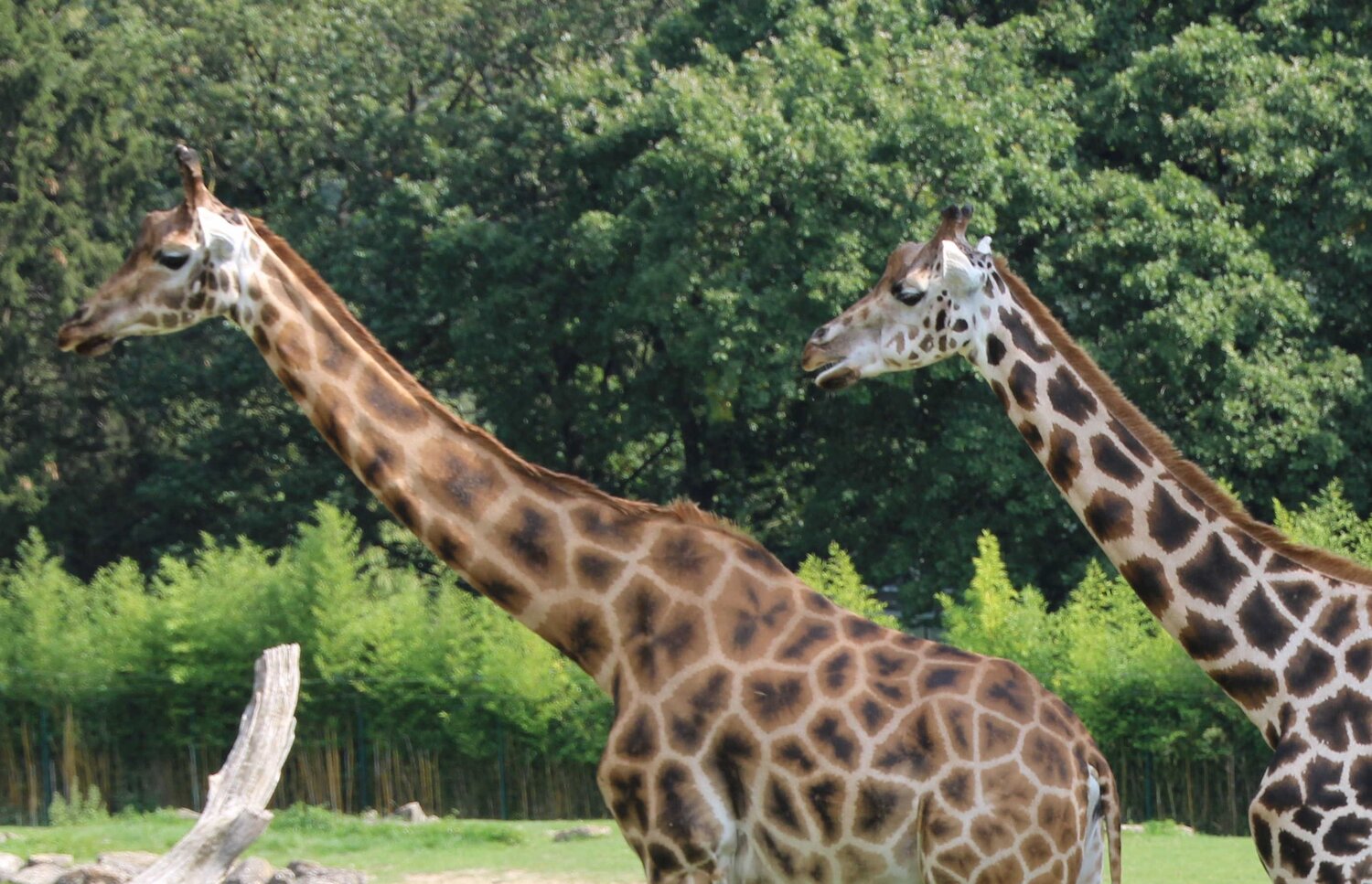Two female Rothschild giraffes from the Opel Zoo came to Tierpark Berlin this week. Maud (17) and Katharina (18) arrived in Berlin on 20 and 22 March. They are now gradually getting used to their new home and herd.
“Maud is slightly smaller than the other adult giraffes. She has darker spots and a longer tail,” says keeper Enrico Rödiger. He also reveals that Maud seems to have a bit of a crush on giraffe bull Jabulani. Whenever the scrutiny of the other six female giraffes becomes a little too much for her, she seeks protection from none other than big, burly Jabulani. This is unusual behaviour, Rödiger explains, as female giraffes generally keep their distance from the males. While Maud is shy, reserved and a little uncertain, fellow newcomer Katharina appears more confident and friendly. Apparently, she was something of leader in her herd at the Opel Zoo. “Maud and Katharina came to us on the recommendation of the European conservation breeding programme,” says curator Markus Klamt. “We are curious to see how well they integrate into the herd over the next few days.” The IUCN Red List classifies giraffes as threatened. A quarter of the world’s population of Rothschild giraffes are kept in European zoos, and there are only around 1,300 individuals living in their natural habitat. However, thanks to conservation efforts, numbers are gradually rising. The hope is that Maud and Katharina will be able to contribute to the preservation of their species with their own offspring. For many years, Berlin’s zoos have been working with the Wild Nature Institute to research and protect giraffes in Tanzania: Giraffe – Tierpark Berlin (tierpark-berlin.de)
Rothschild giraffes inhabit savannahs and open woodland in sub-Saharan Africa. They usually live in large herds of up to 50 individuals and don’t lay claim to specific territories. The patterns on their coat, which mimic the dappled light on tree bark, provide camouflage and aid in thermoregulation. Giraffes feed on foliage. With the help of their blue-black tongues, which are up to 50 cm in length, they can easily get at the tastiest leaves in the highest treetops. Their favourite are fresh acacia shoots. While female giraffes live in open groups, often leaving their herd to join new ones, bulls tend to club together in small “bachelor” groups or lead solitary lives. Giraffes are active both day and night, constantly wandering the savannah in search of food. In the wild, giraffes can live to the age of 25. In the care of humans, they have been known to reach the grand old age of 35.
The Tierpark’s Giraffe House is reopening just in time for Easter, with a new, more natural appearance. Visitors will be able to watch the graceful herd –sponsored by housing association HOWOGE – through a large panoramic window from the comfort of rustic wooden benches. Zoo and Tierpark Director Dr Andreas Knieriem is delighted by the excellent progress being made on the Tierpark’s African Savannah as well as on the special raised giraffe walkway. The redesigned giraffe habitat with its wooden walkway and viewing platform will allow visitors to meet and greet the world’s tallest animals, and even feed them. “Encountering a giraffe at eye level is a very special experience – a moment you’re unlikely to forget,” enthuses Knieriem. Seven other giraffes live at Tierpark Berlin alongside newcomers Maud and Katharina. They include last year’s baby Frieda (nine months), her father Jabulani (10), and her mother Amalka (8).
Tip: Still no plans for the Easter school holidays? The Zoo School and Tierpark School have a few spaces left. Book under:
Tours and experiences for children – Zoo Berlin (zoo-berlin.de)
Holiday programme – Tierpark Berlin (tierpark-berlin.de)
Background – African Savannah
According to the current schedule, the Tierpark’s African Savannah will open in spring 2023. When completed, the entire area will be around 37,000 m². The reconstruction of the giraffe habitat is part of a long-planned redesign of Tierpark Berlin’s layout. In order to provide insight into the natural habitats of the individual species – including their special features and interactions and the threats facing them – the animals are now being grouped into geographical zones. The protection of species and natural habitats also plays a central role at the Tierpark, and its Berlin World Wild conservation programme supports more than 35 projects around the world.
